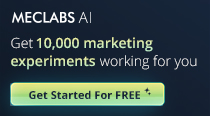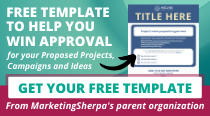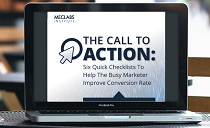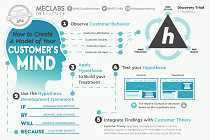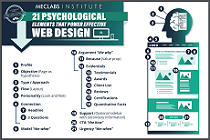January 15, 2003
Case Study
SUMMARY:
If you publish email newsletters for profit, absolutely read this
Case Study to pick up some tips on how SmartBrief was able to make
sales in a lousy economy.
Includes details on how they grow their lists, pick marketplaces to
launch in, manage editorial, and sell ads.
|
|
CHALLENGE
It has always been the case that although there are
many fine association publications, for-profit trade magazines
sell a whopping heap more ads than related association
publications ever do.
In fact, many associations farm out their ad sales and/or their
editorial to contractors because it just is not a big enough
source of revenues or member satisfaction to be worth in-house
from already time-strapped staffers.
Rick Stamberger wondered if he could turn things around, help the
associations and beat for-profit trade magazine publishers at the
same time.
With $1.5 million in seed funds, he launched SmartBrief in Sept
1999. His goal: To publish trade association email newsletters
that were ad sales based and highly profitable.
CAMPAIGN
There are about 4,500 national trade associations in
the US of any size (and thousands more small and regional clubs
and groups), so Stamberger chose his targeted deals by looking at
four factors:
Deal Factor 1. Relationships
"It's a challenge to get into associations and get partnerships,"
Stamberger says.
Associations are often driven by boards and committees. You will
almost never find a single decision-maker. They often move
slowly, are resistant to change, and are motivated by serving
members rather than making heaps of money. Making a deal
requires long, slow relationship building and personal
networking.
Stamberger's first targets were associations where he or a
member of his team or board actually had a pre-existing
relationship. "It was 'Who does Rick know and can we actually
get a meeting?" he says.
Then, after looking at ad sales patterns, he slowly broadened the
targets to include associations related to ones SmartBrief
already had a deal with. For example, several associations in
the packaged goods and grocery industry.
Deal Factor 2. House Email Lists
You can not launch an email newsletter without lists, and
unfortunately many associations did not have an active email list
of their members. (A situation that continues somewhat to this
day.)
Although initially Stamberger oked deals with associations with
as few as 4,500 names, he now requires at least 10,000 names who
have been actively receiving email from that association. (If
the group has been collecting names but not sending anything, the
list may be no good.)
Deal Factor 3. Daily Need-to-Know News Flow
Stamberger could not make enough money for the effort of putting
all the systems (the deal, the database, the editorial, the ad
sales team, etc.) in place for anything less than a daily
newsletter.
Plus, a well-done daily can achieve marketplace mind-share
dominance far more quickly than a lower frequency.
He notes, "Regulatory activities drive news frequently, so we'd
look at what industries are regulated and where there's a
political aspect to business."
Deal Factor 4. A Good Marketplace to Sell DR Ads in
Stamberger looked for "capital-intensive industries" which have
the most advertisers trying to appeal to the capital-spenders.
He also checked to see if those advertisers traditionally
invested in direct response. "Our view is we're not selling ads,
we're really selling direct marketing."
"Even if an existing trade magazine isn't getting any traction on
ad sales with their email newsletter, we won't take that as a
necessarily bad sign. We frequently end up with segments of a
company's marketing budget that's not print ad orientated. We're
doing lead generation for companies and that's different from
display advertising."
Stamberger's sales reps may end up pitching an entirely
different marketing exec on the client side than the existing
trade mags have relationships with.
Stamberger pitched the following four benefits to potential
partner associations (in order of importance):
a. A no-cost daily newsletter as a member benefit
b. Space for 2-3 items within the daily for official
association announcements and offers (presented as snippets
plus a link to the association site)
c. Feedback from SmartBrief's editors about which topics in
the top news items tended to get the most clicks, which
might help an association program its trade shows and plan
research papers
d. Income from a slice of the ad sales
Stamberger notes that a critical part of every negotiation was
repeating the following like a mantra at every association
meeting, "We don't rent out lists. We don't sell our list. We
don't let them out on a date. It's the core of our business."
Once the deal was signed, the SmartBrief team swung into action
to launch the new newsletter.
-> Circulation: Converting names into subscribers
"It's really a double opt-in," says Stamberger. SmartBrief never
assumes that just because a member has given their email to their
association that ipso facto they must want an email newsletter.
Sending anything that could ever remotely be construed as
unwanted email could damage that association's relations with
members. It is never worth the risk.
Instead, SmartBrief's circulation team conduct a one-week
conversion process. "We send out the first five days worth of
service with a letter from the association president at the top
saying this is a new free service, but you have sign up for it."
SmartBrief manages the database of subscribers on behalf of the
association, and marries every new account with corresponding
data already gathered by the association about that member's
name, title and company.
The newsletter issues continue to feed info to that database,
such as which stories and ads each member clicked on recently.
Stamberger can create reports for advertisers showing not
only how many people clicked, but what demographic clicked.
His team are exquisitely careful with this data though. They
never, ever tell an advertiser the exact name of a person who
clicked because that would be an invasion of privacy.
"I would never tell you the CEO of Showtime clicked. It would be
suicide for us to do that," says Stamberger. "But I would tell
you that somebody at Showtime clicked, or that 33 VP Sales
clicked. For most marketers that's a lot better than they can
get elsewhere."
After the initial circulation campaign, each newsletter continues
to add readership via pass-along recommendations. In the
beginning this can make for significant circulation leaps.
-> Editorial: Systematizing the news flow
When launching a new daily, at first the editorial team research
related news services and Web sites and set up as many automated
feeds into their own systems as possible.
Then each day a SmartBrief editor picks the top stories of the
day from those gathered and writes a two-sentence intro-snippet
about each for subscribers.
Stamberger cautions other publishers from thinking this type of
semi-automated editorial is easy. "It's labor intensive. You
can't have a 'bot determine what people want to read. Tech can
aggregate and do general filtering, but it doesn't make decisions
or write summaries."
On hiring the right editors, "It's a mix of liberal arts majors
who love to read, and young journalists who like to create
content but aren't going to be creating long-form or worried
about getting a byline. Our copyeditors are generally refugees
from newspapers. That training is very, very useful."
To get maximum opens, the editors headline a fresh news item in
the subject line every day.
-> Ad Sales: Lining up sponsors
Stamberger hired a launch specialist for his ad sales team who
goes into each market offering special charter deals before a
daily starts. Then the ongoing sales team take over these
accounts and build sustainable relationships.
Aside from SmartBrief's remarkable results reporting systems,
some of the key sales benefits are:
a. Exclusivity and limited space: There are only 3 ads
allowed per issue
b. Quick creative changes: Sponsors can change their
creative within 24 hours, which means they can optimize
their offers based on the past few days clicks or for
their own changing needs.
c. Association relationship: The newsletters are all sent
with the association's name in the "from" line and the
association's logo at the top of the screen, so there's a
lightly implied endorsement.
Ad packages sell for $3000-$100,000 depending on the term and the
marketplace. SmartBrief definitely adjusts pricing for each
industry, there is no company-wide standard.
Although some neophyte sponsors request a single issue test buy,
the sales team always advise them it takes 5-7 issues to get true
test results. "It's important to get some traction before
determining success or failure."
Advertisers are strictly limited to the size of their creative.
They get about 60 words of text, plus a small graphic. "Graphic
size was determined early on by the size of email. We did not
want to be sending 100K emails to people on a daily basis."
RESULTS
"We have been profitable for the past three
quarters. We are cash-flow positive. Our subscribers have
increased from 1,500 on day one to 260,000 today, and we suspect
we'll launch another 10-12 newsletters in 2003," says Stamberger
happily.
He is proudest of the fact that "our up-front sales for 2003 were
triple what they were in 2002. I've got a great sales team. We
learned from 2002 where budget cycles were. We knew we had to
start selling long-term deals earlier. By the time Dec 15th
rolls around it's really tough to close things."
However, one hope has not come true: No advertiser has bought a
sponsorship across all the publications, or even most. Even
large sponsors, such as IBM, will not buy ads across many
newsletters because their own internal divisions have different
media buyers and schedules.
The newsletters themselves have proven more popular than anyone
expected. In some cases associations find these dailies are
their number one most appreciated member benefit.
Issues get an unusually high open rate. "90% of readers read
issues 3-5 times per week," says Stamberger. "We typically have
open rates north of 70% in every instance."
This popularity has translated into unexpected profits. Many
readers have contacted SmartBrief asking if the company would
create custom-dailies for their employees.
"The first day we launched I got a phone call from the VP of a
very large food company in Minnesota saying, 'Can you do this for
our execs and cover our competitors?' I said, 'I just launched
the business, call me back in six months.' And she did!"
Now the custom corporate newsletter business accounts for 15% of
SmartBrief's revenues and growing. Typical corporate accounts
have 4,000-5,000 employees they want to send dailies to.
SmartBrief's editors pick out news items that fit their needs
more specifically than the general association dailies, and then
add links to internal company news in the newsletter as well,
such as HR plan changes.
Stamberger prices this service at $75,000-$125,000 per year. "We
thought that was a fair number."
We asked how do these deals fall in his lap when other custom
publishers and newsfeed services' sales reps are desperately
fighting for the business? "The brand matters, the association
relationship is huge," he explains.
http://www.smartbrief.com


